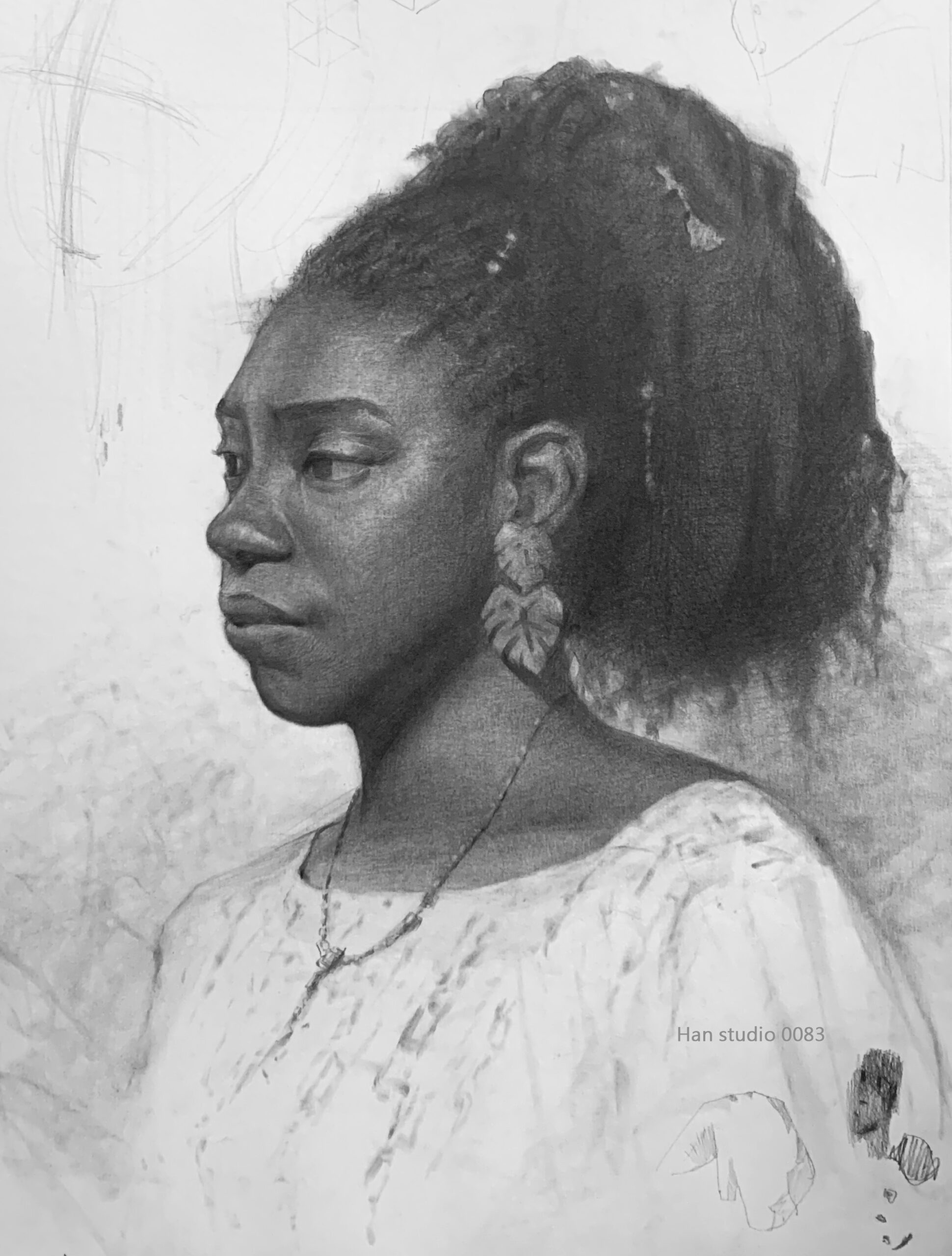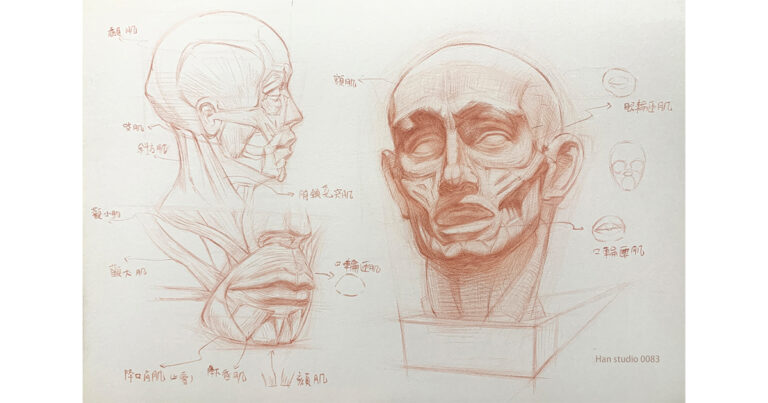Here's a record of this portrait sketch session. I can't help but envy how long and slender the limbs of French models appear.
In the latter part of this session, Iˊve also organized the structure of the head and how to draw it. Pairing this explanation with the first image will make it easier to understand, so if youˊre interested, follow along!
The following explanations use a frontal model to describe facial structure, but keep in mind that everyone’s proportions vary slightly in real life.
The head can be divided into three equal parts:
(See the small skull diagram in the middle)
1.From the hairline to the brow ridge
2.From the brow ridge to the base of the nose
3.From the base of the nose to the chin
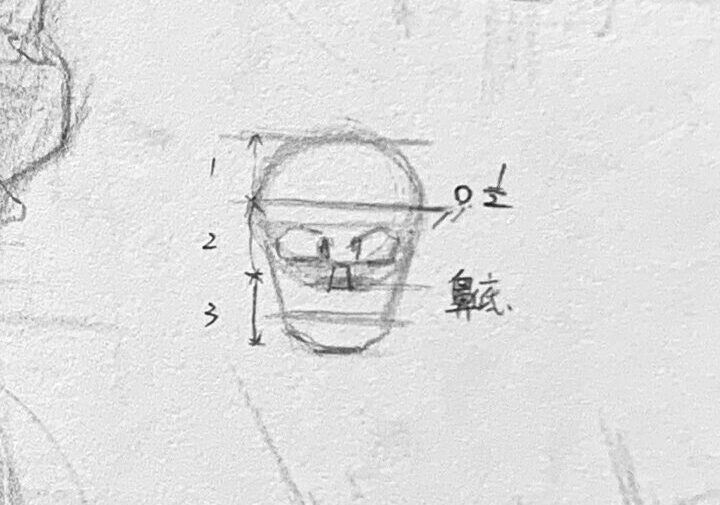
● Distribution of facial features in the front view:
1.The eyes are located on the horizontal midline of the head.
2.The width of the nose typically matches the distance between the inner corners of the eyes.
3.The corners of the mouth align with the pupils.
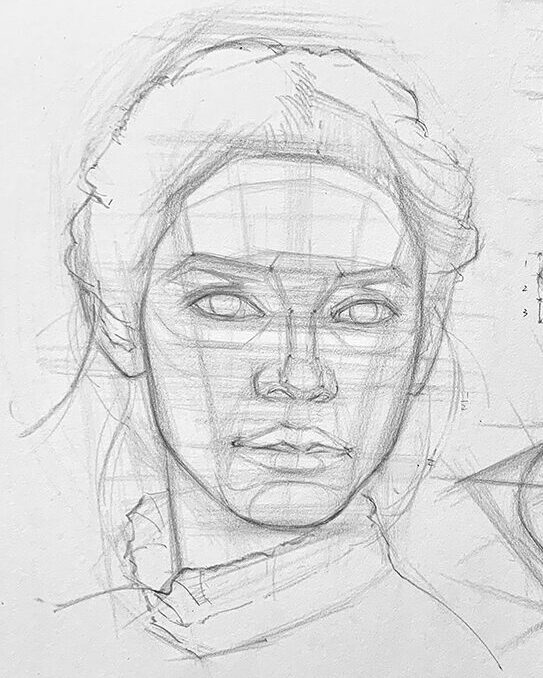
● How to draw a head?
The head can be broken down into geometric shapes, such as a sphere (the skull) and a rectangular block (the face and neck). Refer to the small diagram in the bottom right corner.
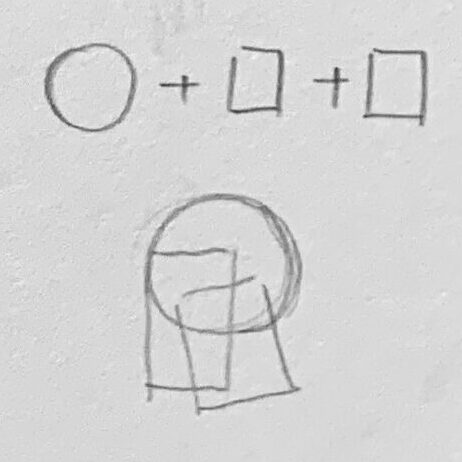
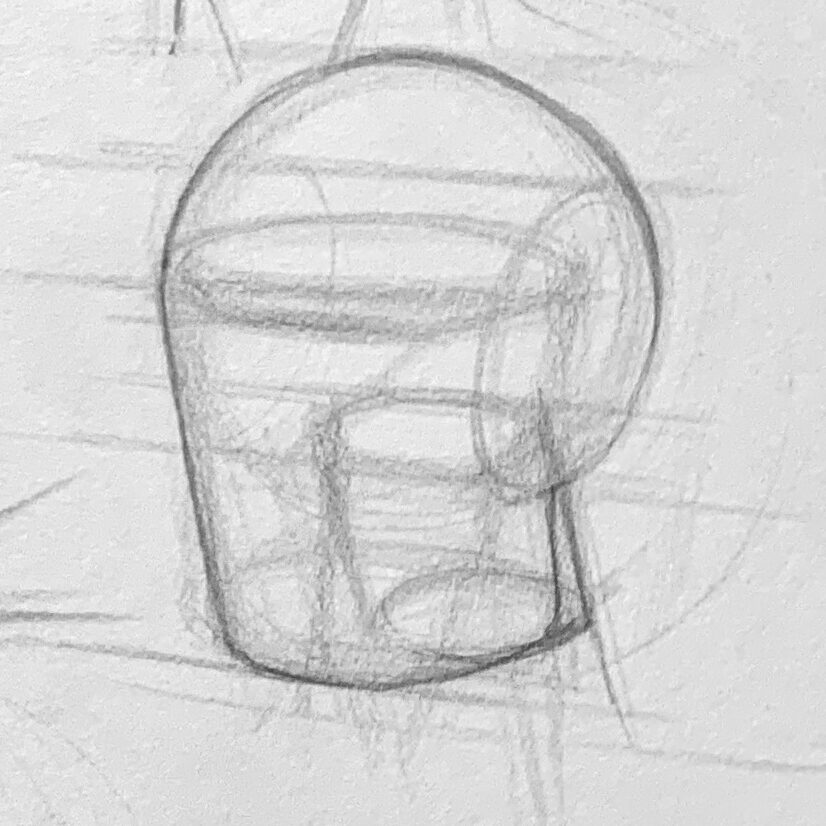
Understanding the basic structure of the head helps in depicting its posture and angles.
1.Simplify the overall shape of the head
Start by drawing a circle, then add the jawline below the circle. Refer to the small diagram in the middle. The midpoint of the circle indicates the brow ridge, and just below that is the eye socket.
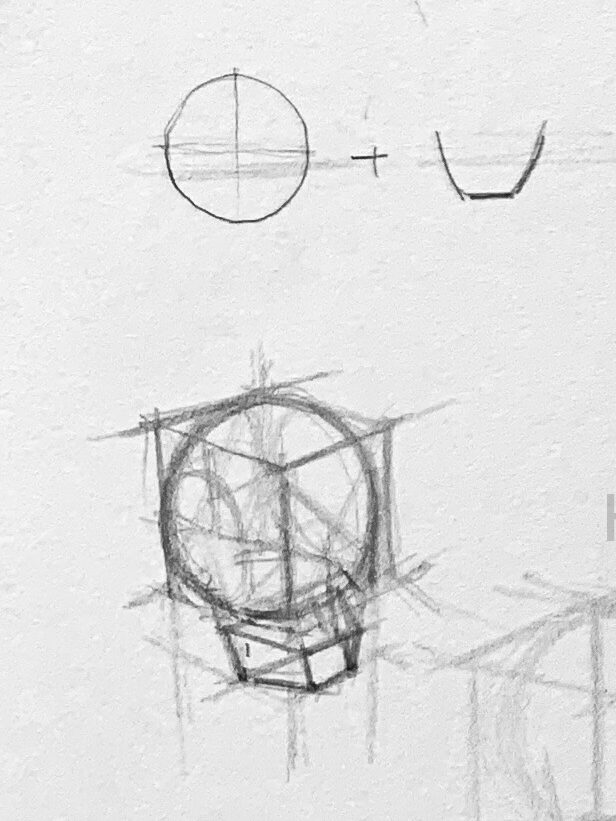
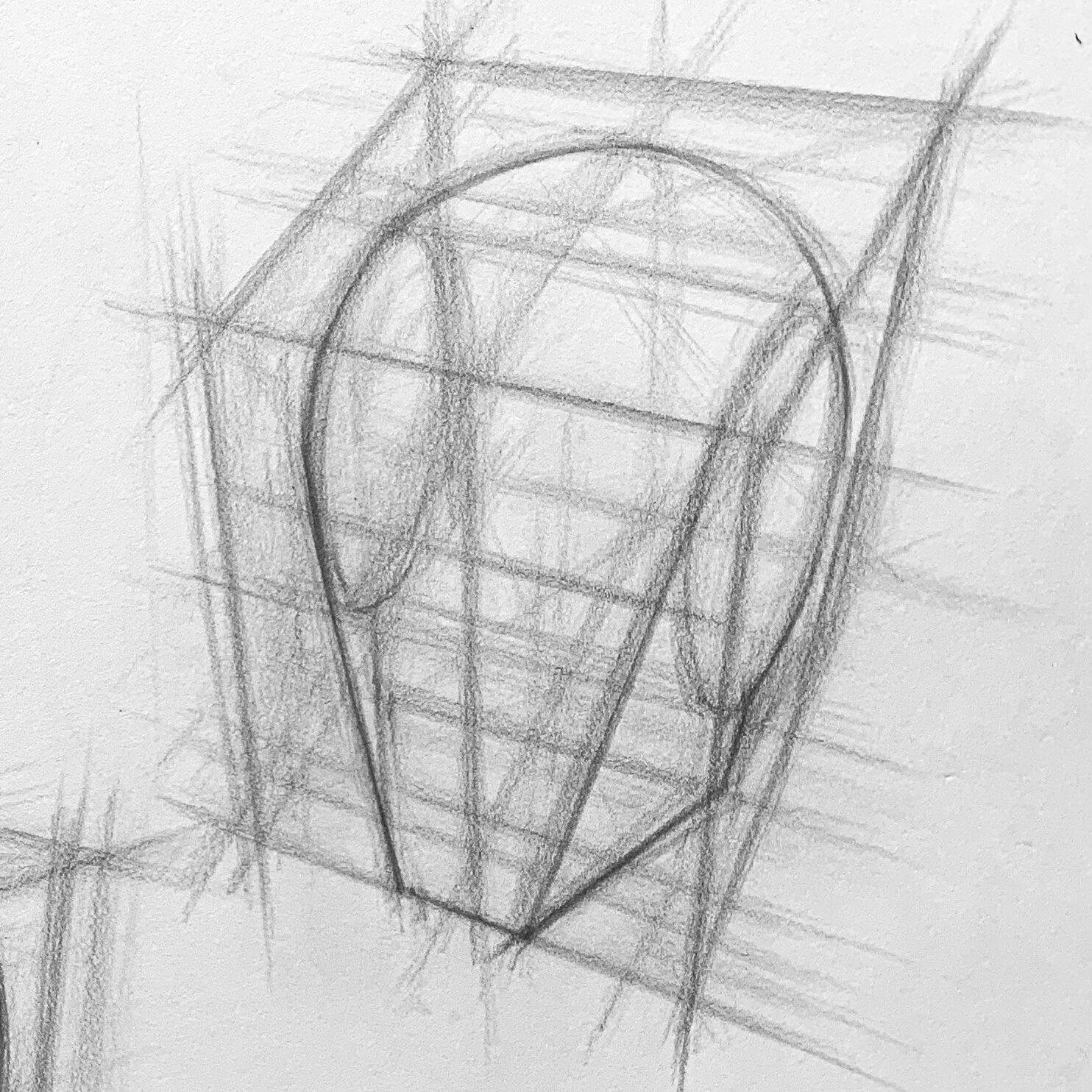
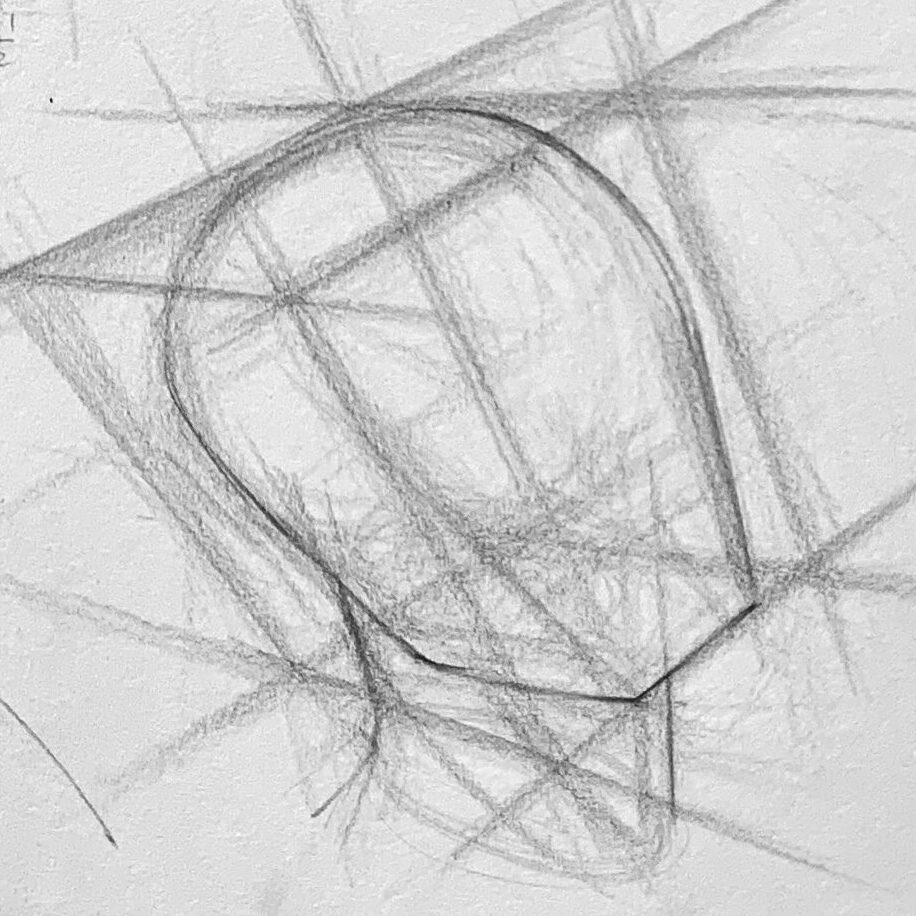
2.Position and draw the facial features
Use vertical and horizontal lines to help position and draw the facial features in relation to each other.
Applying the three equal divisions mentioned earlier (dividing the face from the hairline to the chin into three equal parts) helps determine the placement of the features. Gradually refine the shape of the features.

3.Mark the structure lines for curvature and check positions
Use structure lines to mark the places where the curves and contours of the face change. Refer to the small diagram in the top right corner.
Of course, structure lines do not exist on a real face; drawing them helps us understand and express the structure.
Want to learn how to draw human body parts and understand the key points? Check out the following further reading:
How to Use Two-Tone Shading: Simple Shadow Techniques
How to Sketch Facial Muscles: Capture Realism and Expression
How to Accurately Master Hand Proportions and Joint Structure
Mastering Nose sketch Structure and Perspective Techniques
Understanding the Three Key Elements of Head Structure
Building Up from Simple Contours to Detailed Eye Portraits
Capturing Realism in Lip Drawing: Key Structures and Shading
I hope this structural introduction helps you understand and grasp the key points about the head. If there are any topics or drawing techniques you'd like to explore, feel free to leave a comment or message me. Happy drawing!
